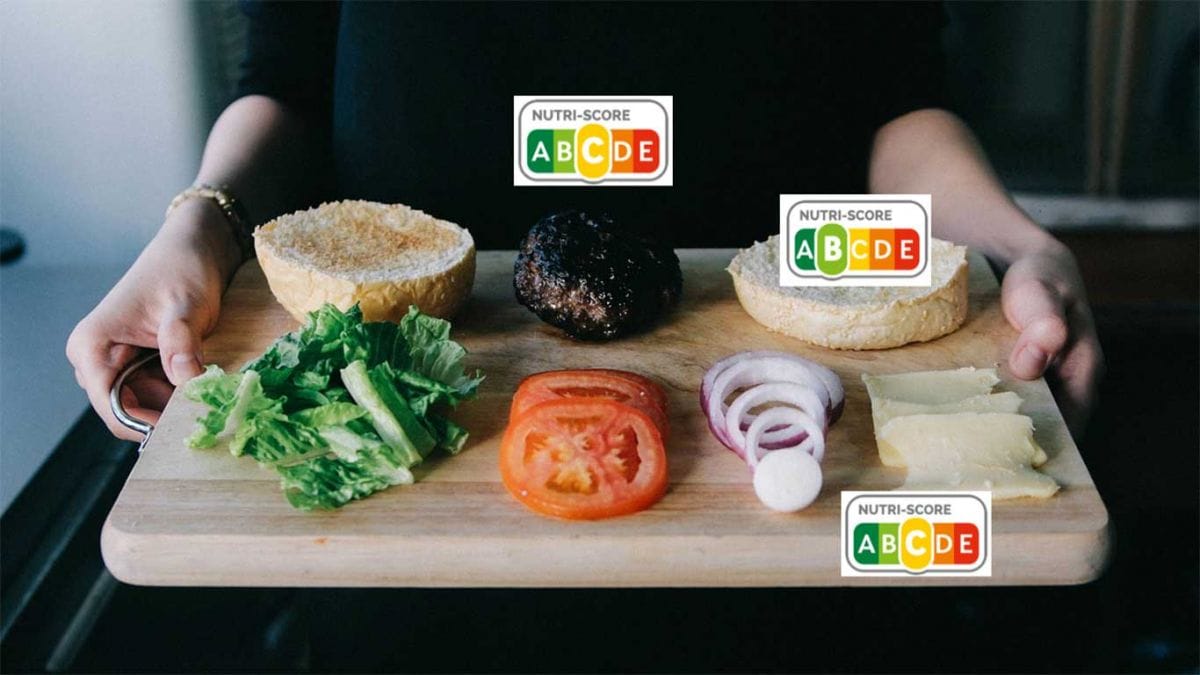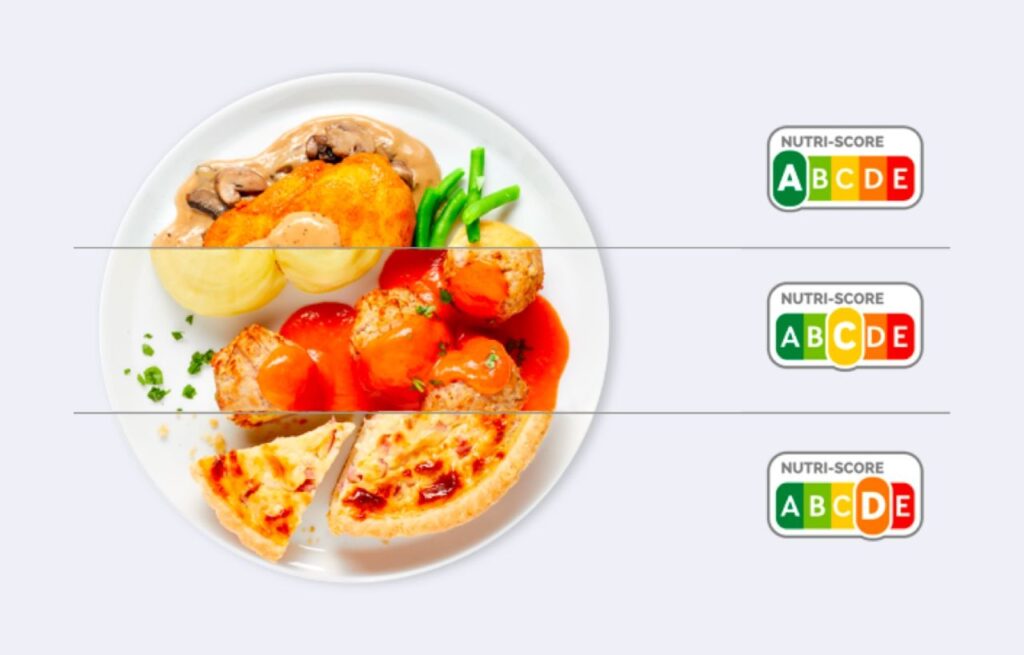The Importance of Nutrition Score
As consumers become increasingly health-conscious, understanding the nutritional value of our food has become more important than ever. One way to quickly assess the nutritional value of a food product is by looking at its nutrition score. In this article, we’ll explore what a nutrition score is, how it’s calculated, and how it’s being used worldwide.
What is a Nutrition Score?
A nutrition score is a numerical rating system that assigns a value to a food product based on its nutritional content. The score is typically calculated by evaluating the product’s calories, sugar, saturated fat, sodium, and any beneficial nutrients like vitamins and fiber.
One popular nutrition score system is the Nutri-Score, which was developed by French health authorities in 2017. The Nutri Score ranges from A to E, with A being the healthiest score and E being the least healthy.
How is Nutri Score Calculated?
The Nutri-Score is calculated based on a formula that takes into account both the positive and negative aspects of a food product’s nutritional content. The formula subtracts points for negative aspects like calories, sugar, saturated fat, and sodium, and adds points for positive aspects like fiber and protein.
The resulting score places the product into one of five categories: A, B, C, D, or E. An A score represents the healthiest option, while an E score represents the least healthy option.
How the Nutri Score works

The Nutri-Score result is a single letter that represents the overall nutritional quality of a product. The score ranges from A to E, with A being the most nutritious and E being the least nutritious. The letter is determined by a complex algorithm that takes into account the product’s nutrient content and assigns a point value to each nutrient.
The algorithm takes into account both positive nutrients such as protein and fiber, as well as negative nutrients such as saturated fat and added sugars. The score is then calculated by subtracting the negative points from the positive points and assigning a letter based on the resulting value.
For example, a product that is high in protein and fiber but low in saturated fat and added sugars would likely receive a high score of A or B. Conversely, a product that is high in saturated fat and added sugars but low in protein and fiber would receive a low score of D or E.
The Nutri-Score result is designed to be easily understandable by consumers, even those who may not have a strong background in nutrition. The letter grade provides a clear and simple indication of the overall nutritional quality of a product, allowing consumers to make more informed decisions about their food choices.
Research has shown that the Nutri-Score is an effective tool for promoting healthier food choices. Studies have found that when the Nutri-Score is displayed on products, consumers are more likely to choose products with higher scores and that the system can be used to encourage companies to reformulate their products towards healthier ingredients.
Overall, the Nutri-Score result provides a valuable tool for consumers to make more informed choices about the foods they eat and for companies to promote healthier products and improve the overall nutritional quality of their offerings.
Good and Bad Nutrition Scores

When it comes to nutrition scores, a higher score is not always better. Foods with high scores tend to be high in calories, sugar, saturated fat, and sodium, which are all linked to negative health outcomes like obesity, heart disease, and diabetes.
On the other hand, foods with low scores tend to be higher in beneficial nutrients like fiber and protein, which are important for maintaining good health.
Ultimately, a good nutrition score is one that strikes a balance between these factors, with a focus on reducing negative aspects and increasing positive ones.
Countries with Nutri Score
Since its introduction in France in 2017, the Nutri-Score has gained traction around the world. Today, several European countries have adopted the Nutri-Score, including Belgium, Germany, the Netherlands, and Spain.
In addition, some major food manufacturers have voluntarily adopted the Nutri-Score on their products, including Nestle, Danone, and Coca-Cola.
Nutrition Labelling in the EU

In the European Union, nutrition labeling is mandatory on pre-packaged foods. The regulation requires that the labeling must include information on the energy value, fat, saturated fat, carbohydrates, sugars, protein, and salt per 100 grams or 100 milliliters of the product.
In addition to the mandatory information, the EU also allows for voluntary information to be included on the label, including the Nutri-Score system. Companies can choose to use the Nutri-Score alongside the mandatory labeling as a way to provide consumers with additional information on the nutritional value of their products.
The Nutri-Score is not currently mandatory in the EU, but there have been calls for it to be made so. Some member states, such as France, have already made the Nutri-Score mandatory on a voluntary basis, and several other countries have followed suit.
However, there has been resistance from some industry groups who argue that the Nutri-Score unfairly penalizes certain products, such as cheese and meat. Additionally, some member states have their own nutrition labeling systems, which may cause confusion for consumers if the Nutri-Score were to be made mandatory across the EU.
Despite these challenges, the Nutri-Score has gained popularity in the EU and is increasingly being adopted by food manufacturers and retailers. It provides an easy-to-understand system for consumers to quickly assess the nutritional value of a product, and can be used by companies to promote healthier products and encourage reformulation towards healthier ingredients.
How can companies use the Nutri Score to their advantage?

For food manufacturers and retailers, the Nutri-Score can be a valuable tool for promoting healthier products and providing transparency to consumers. By displaying the Nutri-Score on their products, companies can demonstrate their commitment to health and wellness, and differentiate their products from competitors.
In addition, companies can use the Nutri-Score as a benchmark for product reformulation, helping to improve the nutritional quality of their offerings over time.
The Future of Nutri Score
As consumers continue to prioritize health and wellness, it’s likely that nutrition score systems like the Nutri-Score will become more widespread around the world. However, there are also challenges to implementing such systems, including differences in national dietary guidelines and industry lobbying.
Despite these challenges, the Nutri-Score has shown promise in promoting healthier eating habits and providing greater transparency to consumers. As more countries and companies adopt the Nutri-Score, it may become a positive point.
Sources:

Here are some reliable and scientific sources that support the information presented in this article:
“Nutri-Score: A Proposal for a French Nutrition Labeling System Based on Nutritional Recommendations and Consumer Perceptions” by Julia Baudry, et al. Frontiers in Public Health, 2016. (https://www.ncbi.nlm.nih.gov/pmc/articles/PMC5028859/)
“Development of a Focused Nutrient Profiling System for the French Context: Nutri-Score” by Mathilde Touvier, et al. Public Health Panorama, 2017. (https://www.euro.who.int/__data/assets/pdf_file/0010/352961/Development-of-a-focused-nutrient-profiling-system-for-the-French-context-Nutri-Score.pdf)
“Nutri-Score: Overview, Status Quo and Implementation in Europe” by Stephanie Schütze, et al. Journal of Verbraucherschutz und Lebensmittelsicherheit, 2021. (https://link.springer.com/article/10.1007/s00003-021-01522-5)
“Evaluation of the Nutri-Score Front-of-Pack Nutrition Labeling Scheme in France: An Observational Study of Purchase Patterns in Different Sectors” by Chantal Julia, et al. PLOS Medicine, 2019. (https://journals.plos.org/plosmedicine/article?id=10.1371/journal.pmed.1003220)
“The Nutri-Score System: A Tool to Promote Healthy Nutrition and Encourage Industry Reformulation” by Laura Taddei, et al. Nutrients, 2020. (https://www.mdpi.com/2072-6643/12/6/1769/htm)




